skull r
1/35
There's no tags or description
Looks like no tags are added yet.
Name | Mastery | Learn | Test | Matching | Spaced |
|---|
No study sessions yet.
36 Terms
what are the three components of the skull?
splanchnocranium, chondrocranium, dermatocranium
what is the origin, role, and contribution, of splanchnocranium
O= pharyngeal (gill) arches, jaw, and hyoid apparatus and Most ancient part of the skull
C= Forms from pharyngeal arches
R= supports the face, jaws, and gills
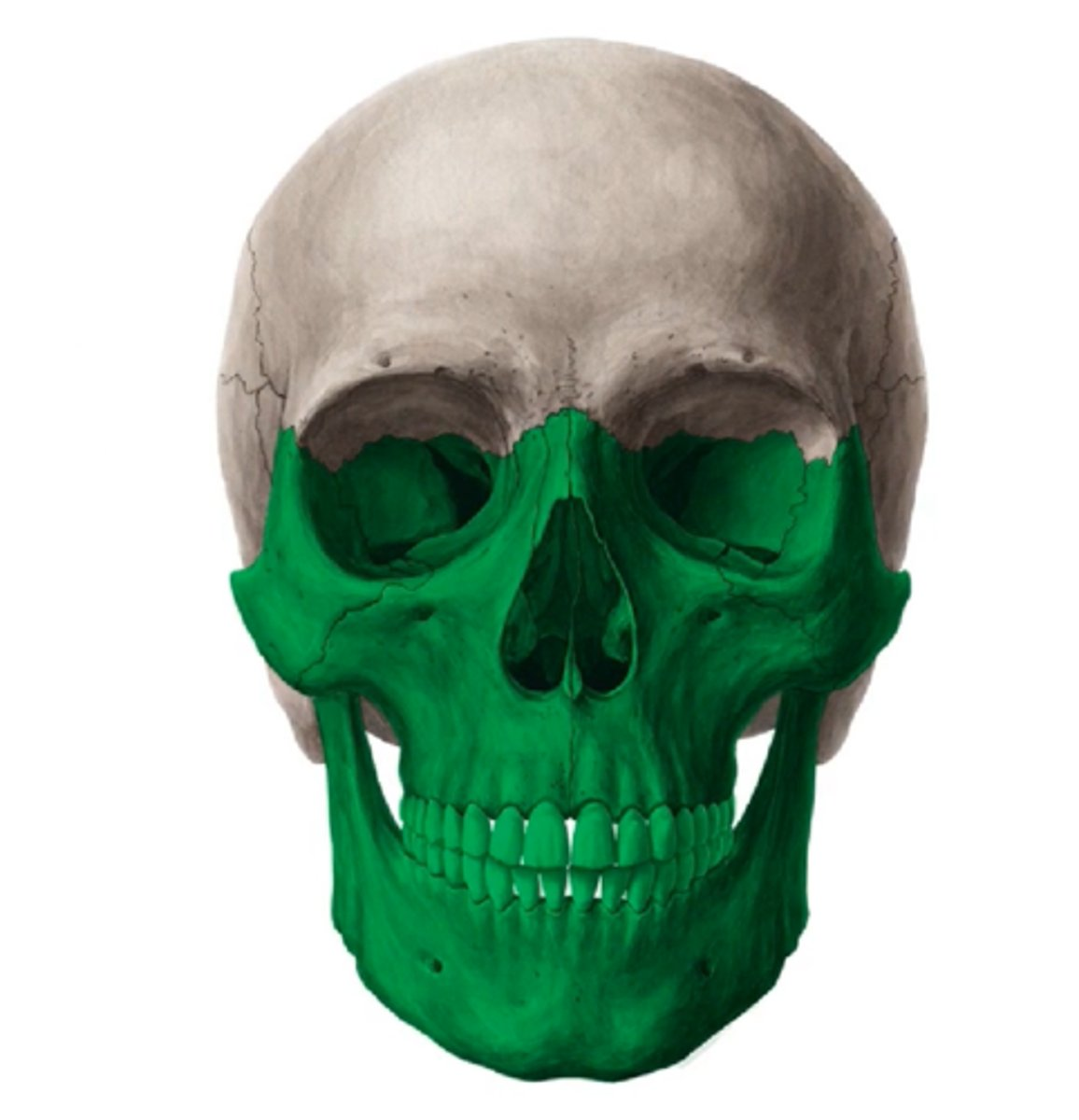
what is the origin, role, and contribution, of chondrocranium
O= Develops from head mesenchyme and neural crest cells
C=Forms the base of the skull
Supports the brain, nose, and inner ear
R= Braincase in cartilaginous fish (Chondrichthyes)
In other vertebrates, acts as a scaffold for the brain and sensory structures
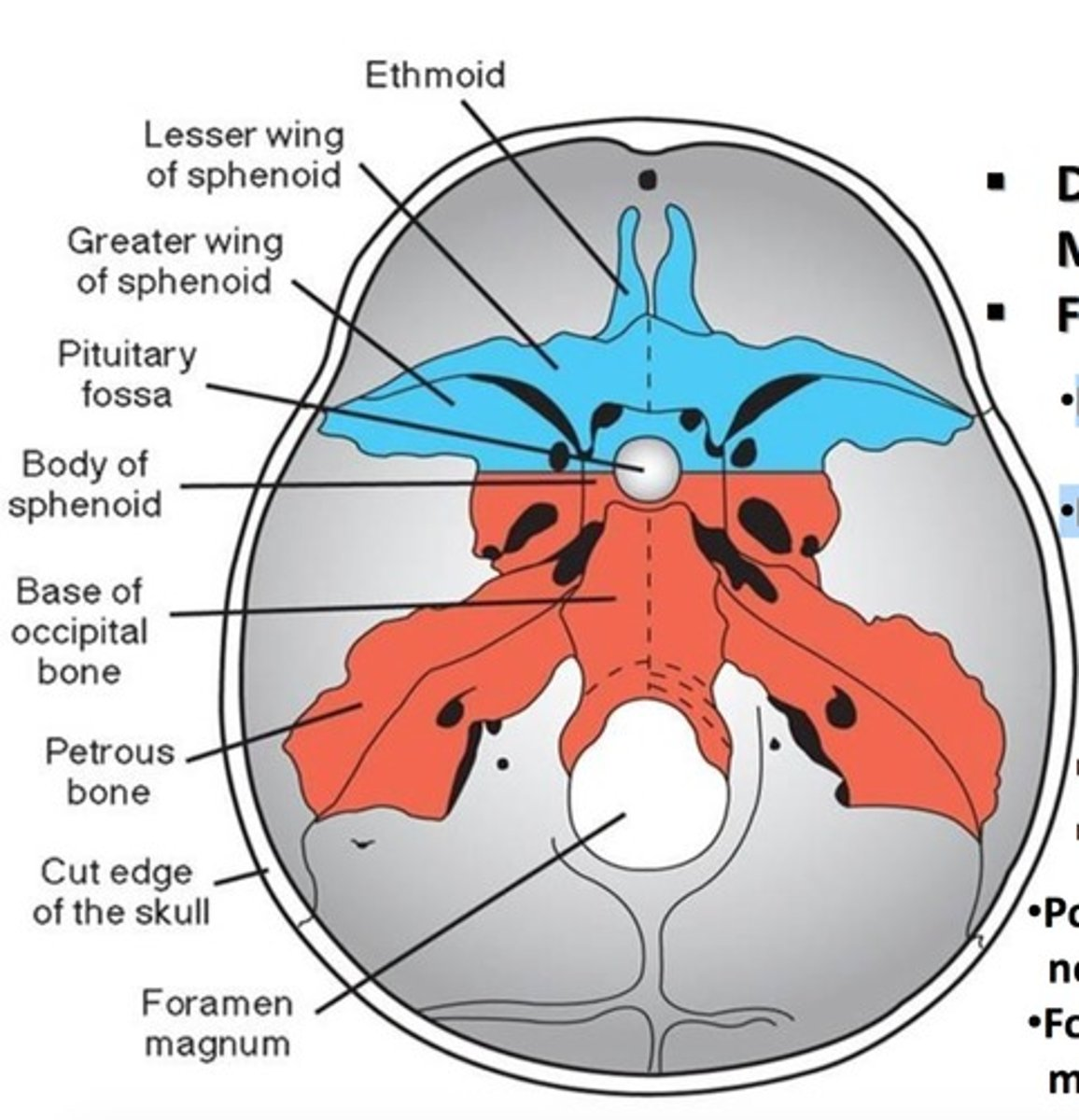
what is the origin, role, and contribution, of dermatocranium
O=Evolved from dermal bone that sank inward
C=series of bones:
Facial (snout, upper jaw)
Orbital (around the eyes)
Temporal (side of skull)
Vault (skull roof)
Palatal (roof of mouth)
Mandibular (lower jaw bones)
R=Forms the outer casing of the skull
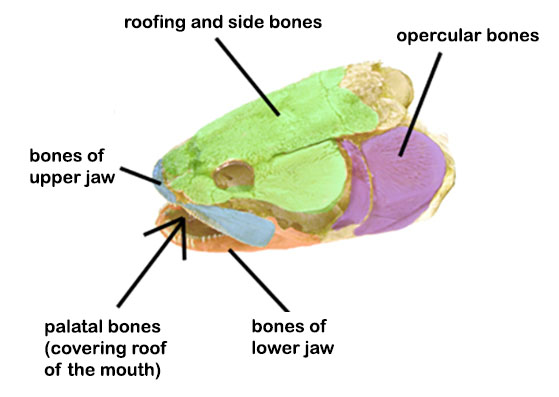
what are the pharengeyl arches?
mandibular and hyoid
Mandibular arch contains?
Palatoquadrate → upper jaw
Meckel's cartilage → lower jaw
Hyoid arch contains?
Hyomandibula → supports jaw / ear in tetrapods
Ceratohyal → supports tongue and throat
what is the origin, position, and contribution, of brain / braincase
O= Brain develops from the neural tube
Braincase forms from cranial elements that surround the brain
C= Provides protection for the brain
Houses sensory organs (eyes, ears, nose)
Serves as a base for cranial muscle attachment and passage for cranial nerves
P= Brain lies above the notochord, in the cranial cavity
Braincase is located at the front of the vertebral column, enclosing and protecting the brain
Paleostylic
No jaw attachment (e.g., jawless fishes)
Euautostylic
Jaw (mandibular arch) attaches directly to skull, not via hyomandibular
Found in placoderms and acanthodians

Amphistylic
wo connections:
Palatoquadrate to skull
Hyomandibula to skull
Seen in early sharks, some bony fishes

Hyostylic
Jaw attaches mainly through hyomandibula
Found in most modern bony fishes
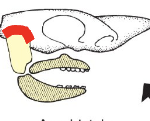
Metautostylic
Jaw joint: quadrate (upper) to articular (lower)
Seen in amphibians, reptiles, birds
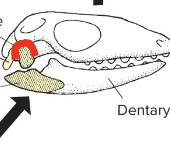
Craniostylic
Jaw joint: dentary (lower jaw) to squamosal (temporal bone)
Found in mammals
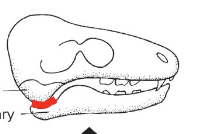
Early vertebrates
Early vertebrates: no formed elements of skull evident (e.g.,Haikouella).
Agnathans
Ostracoderms
Cyclostomes
Ostracoderms: bony head shields(dermal)
Cyclostomes: lack bone entirely;branchial arches present; single median nostril
Ancient gnathostomes (jaws)
placoderms
acanthodii
Placoderms: heavy dermal bony shield on head; upper jaw fixed to skull
Acanthodii: similar to modern Chondrichthyes;possessed mandibular bone to reinforce jaw
Modern chondricthyes
No dermatocranium
Chondrocranium = whole braincase
Jaws on ceratohyal & Meckel's cartilage
Front gill slit → spiracle or lost
Jaw protrudes for streamlined swimming
Actinopterygii
High diversity from adaptive radiation
Many extra facial bones
Operculum covers gills
Pectoral girdle bones attach to skull (extrascapular, cleithrum, postcleithrum, posttemporal)
Mobile jaws enable suction feeding (cranial kinesis)
Sarcopterygii
Upper jaw often fused to braincase
Includes Rhipidistians (tetrapod ancestors)
Labyrinthodont teeth (deeply folded)
Hinged joint between ethmoid and oticooccipital bones
Notochord extends into skull
Tetrapods
Facial bones reduced/fused
Hyomandibula → stapes (ear)
Quadrate-articular jaw joint
Operculum lost
Pectoral girdle separated
Simplified dermatocranium & reduced splanchnocranium
Temporal Fenestrae origin, hypothesized role(s), phylogenetic importance
O= penings in the temporal region of the skull (dermatocranium)
R= Muscle attachment sites
Thermoregulation
I=Used to classify major vertebrate groups by skull type
Jaw Articulation Evolution
Early vertebrates: Quadrate-articular jaw joint
Mammals: shift to dentary-squamosal jaw joint
Fate of Jaw Bones in Mammals
Hyomandibula → Stapes (middle ear bone)
Quadrate → Incus (middle ear bone)
Articular → Malleus (middle ear bone)
Nasal Cavity Function
Holds olfactory epithelium for smell
Nasal Cavity in Fish vs. Tetrapods
Actinopterygii: nasal sac does not open to mouth
Tetrapods: nasal sacs
open to mouth via internal nares (choanae)
Nasolacrimal Duct
Drains tears from the lacrimal gland to the nasal sac
Secondary Palate
Separates mouth and nasal cavity
Allows breathing while chewing or suckling
Present in mammals and some reptiles
Rhynchocephalians
Complete upper and lower temporal bars define fenestrae
1 lower and 2 upper tooth rows
Squamates
Lower temporal bar lost in lizards; both bars lost in snakes
Quadrate-articular jaw join to Snake skulls not as fully fused, more movable links
Testudines
Anapsid skulls
Emarginations: inward"scoops" from edge of dermato cranial bones
Lack teeth, keratinized toothplates instead
Crocodilians
fully diapsid, antorbital fenestra lost
Birds
modified diapsid
Braincase inflated
Lack teeth; jaw bones form beako
Upper temporal bar lost; lower bar forms jugal bar
Dinosaurs
fully diapsid
Usually possess both antorbital and mandibular fenestra
synapsids
One hole (temporal fenestra) behind eye
Hole gets bigger and joins eye socket in mammals
Arch of bones (zygomatic) around the hole
Examples: Dimetrodon, therapsids, cynodonts
mammals
Many bones fused together (like sphenoid, temporal)
Two occipital condyles (helps head move better)
Nasal capsule fully turned to bone
Turbinate bones: curled bones for smelling